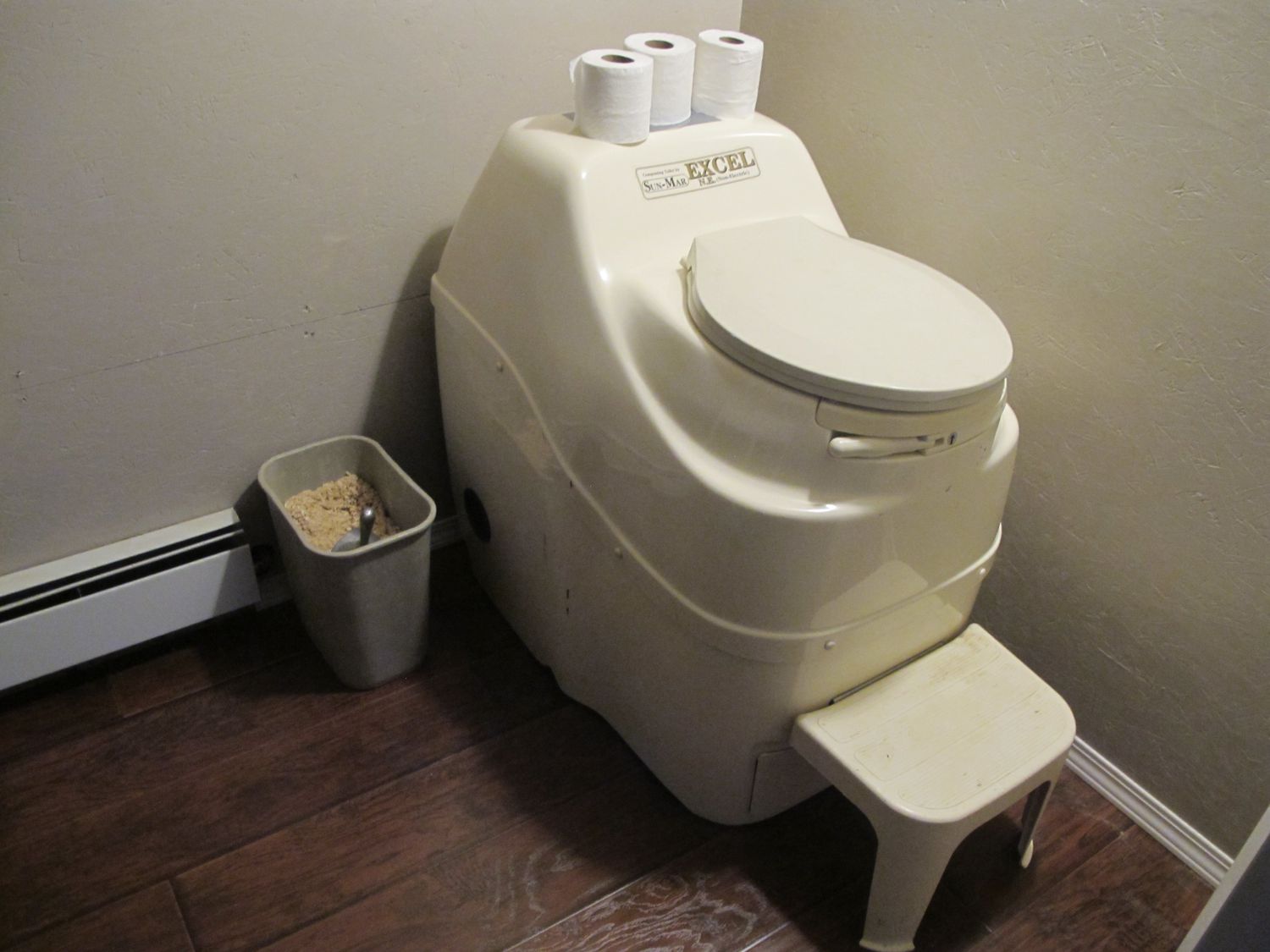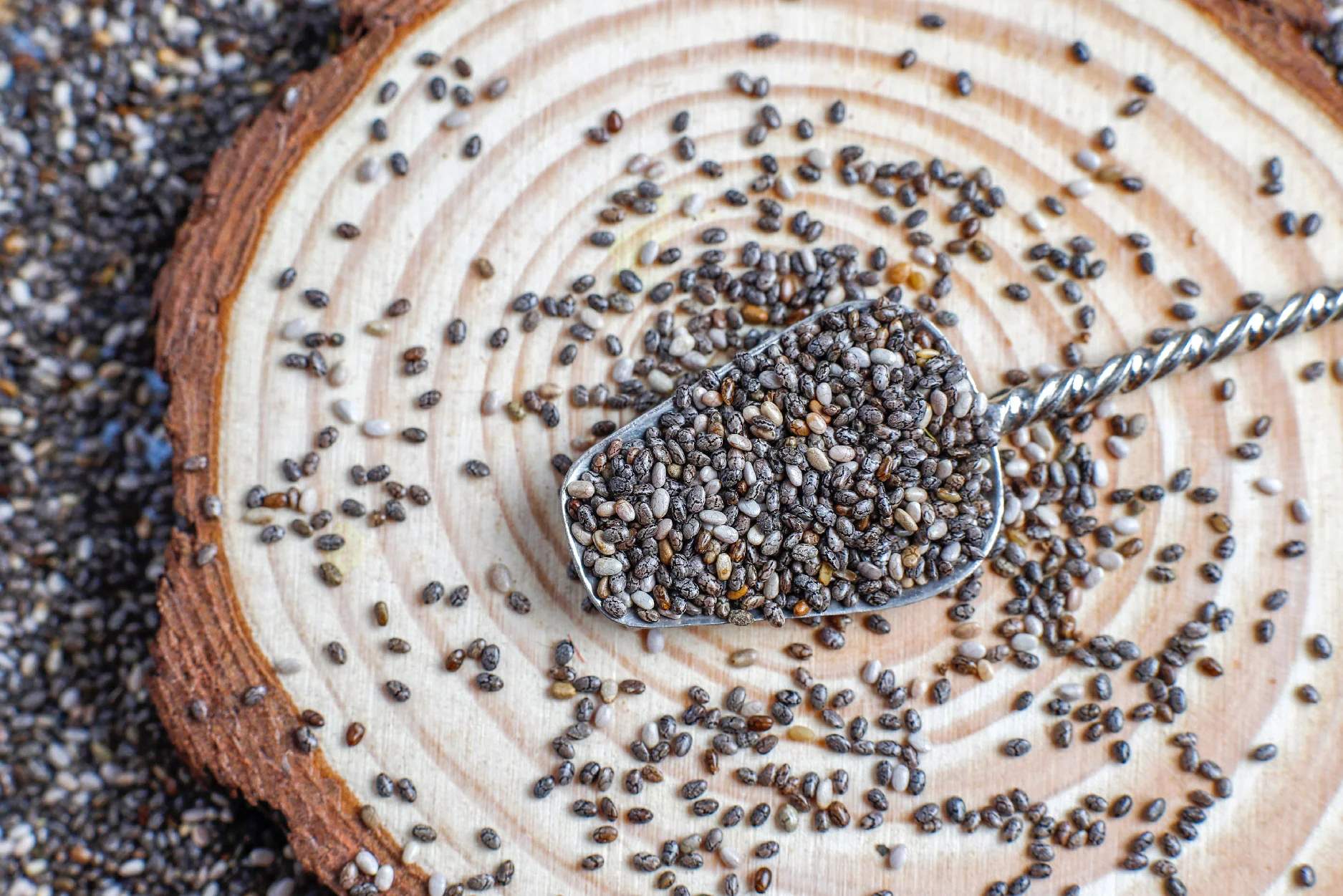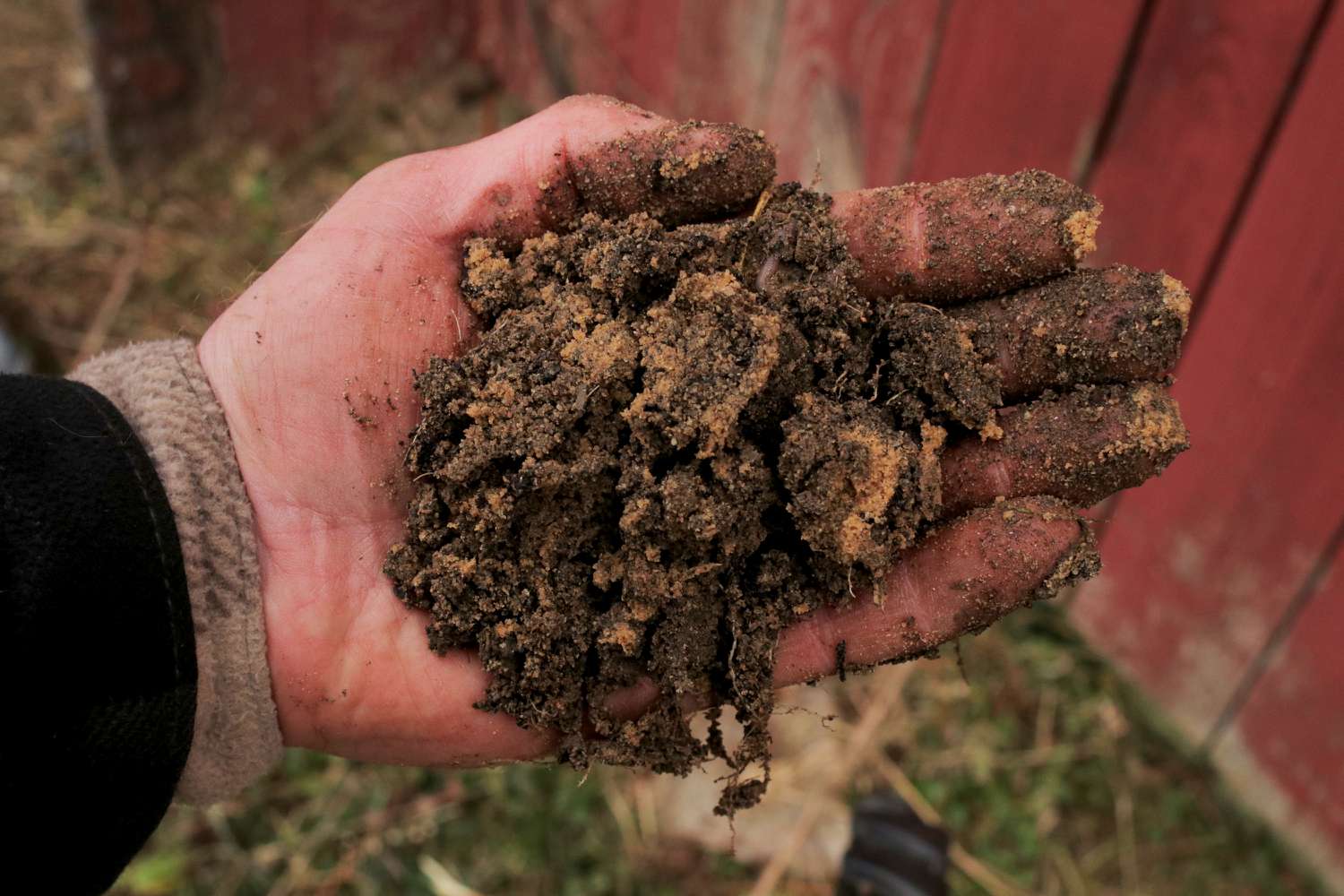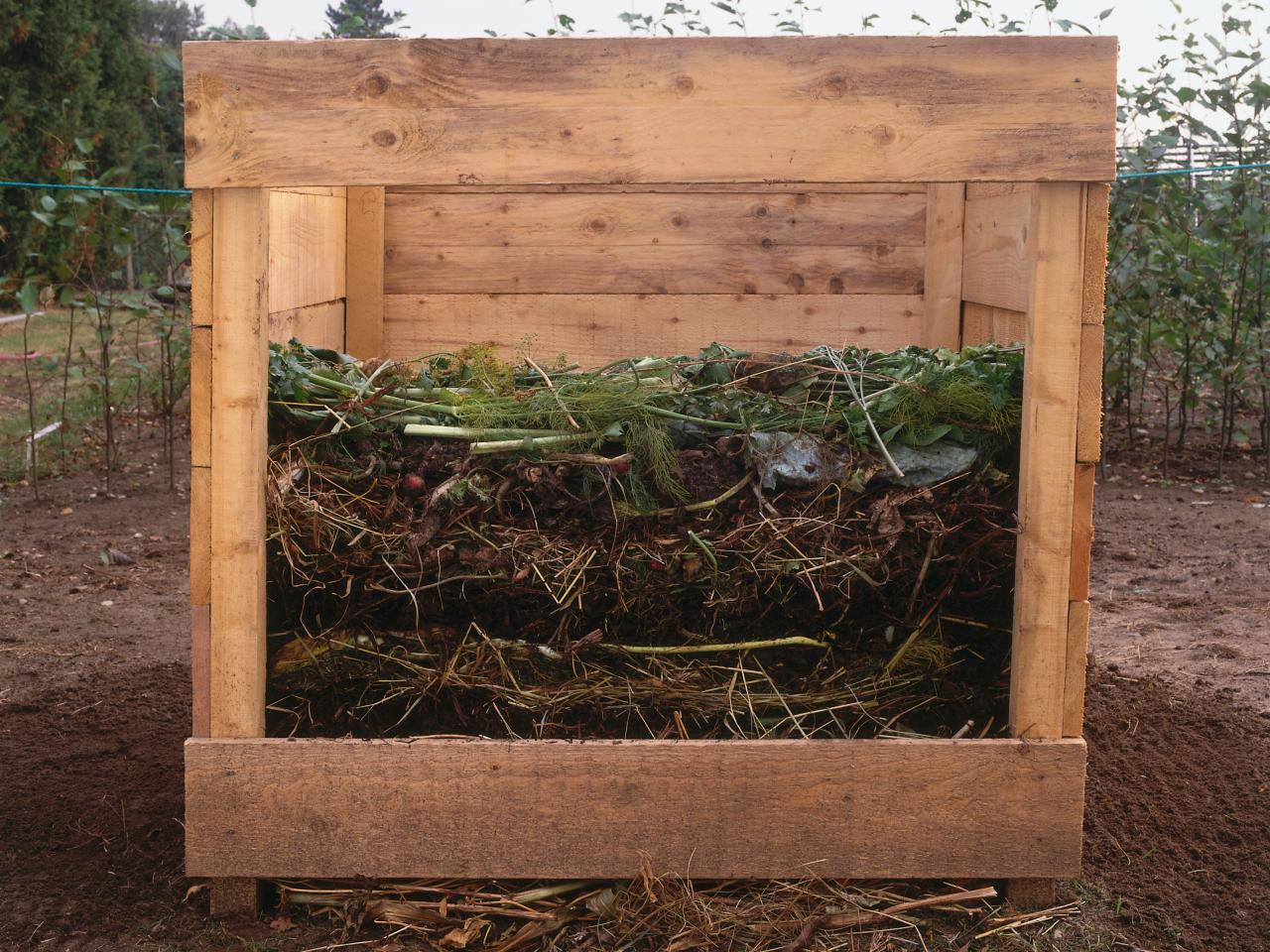Home>Gardening Techniques>DIY Projects>How Do You Use A Compost Toilet
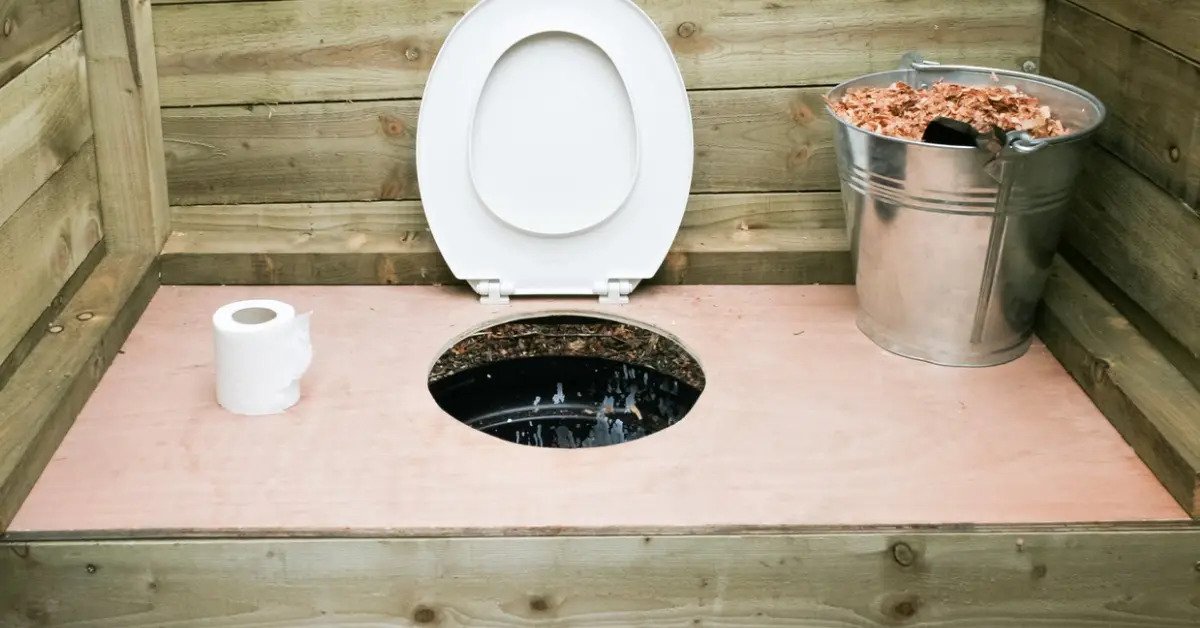

DIY Projects
How Do You Use A Compost Toilet
Modified: January 22, 2024
Learn how to use a compost toilet with our DIY projects. Discover eco-friendly ways to handle waste and reduce your environmental impact.
(Many of the links in this article redirect to a specific reviewed product. Your purchase of these products through affiliate links helps to generate commission for Chicagolandgardening.com, at no extra cost. Learn more)
Table of Contents
Introduction
Welcome to the world of DIY projects! Whether you’re a seasoned DIY enthusiast or just starting out, there’s no denying the satisfaction that comes from creating and repairing things with your own two hands. From building furniture to remodeling your home, the possibilities are endless.
But have you ever considered taking your DIY skills to the next level by building your own compost toilet? You might be thinking, “Why would I want to do that?” Well, a compost toilet offers a sustainable and eco-friendly solution for managing human waste. Not only does it prevent pollution and conserve water, but it also produces nutrient-rich compost that can be used to fertilize your garden.
In this comprehensive guide, we will explore what compost toilets are, the benefits of using one, how they work, and how to set up and maintain your own compost toilet. Whether you’re living off the grid, optimizing your home’s sustainability, or simply looking to reduce your ecological footprint, a compost toilet is a practical and environmentally conscious choice.
So, let’s roll up our sleeves and dive into the world of compost toilets. From understanding the basics to troubleshooting common issues, by the end of this article, you’ll be equipped with all the knowledge you need to embark on your own compost toilet DIY project. Let’s get started!
What is a compost toilet?
A compost toilet, also known as a dry toilet or a nature’s head, is an innovative and sustainable alternative to traditional flush toilets. Unlike conventional toilets that rely on water to flush waste away, a compost toilet transforms human waste into compost through natural decomposition processes.
Compost toilets are designed to separate solid and liquid waste. The solid waste, known as “humanure,” is combined with organic materials such as sawdust, coconut coir, or peat moss to aid in the composting process. The liquid waste, commonly referred to as “gray water,” is diverted and treated separately.
One of the key features of compost toilets is the absence of water. By eliminating the need for flushing, compost toilets significantly reduce water consumption. This makes them particularly beneficial in areas with water scarcity or in off-grid living situations where access to water is limited.
Compost toilets come in various designs, including self-contained units, central composting systems, and vermiculture toilets. Self-contained units are compact and can be installed in individual bathrooms or cabins. Central composting systems are designed for larger households or communal settings. Vermiculture toilets employ the use of worms to aid in the decomposition process, making them even more efficient.
These eco-friendly toilets offer a multitude of benefits. They have a smaller ecological footprint compared to traditional toilets as they do not require the use of water or energy for flushing. Compost toilets also contribute to reducing environmental pollution by preventing the release of harmful wastewater and reducing the demand for chemical-based fertilizers.
In addition to their environmental advantages, compost toilets can also save you money in the long run. With no need for water supply or sewage systems, the costs associated with installation and maintenance are significantly reduced.
Now that you have a better understanding of what compost toilets are, let’s explore the benefits of using one in the next section.
Benefits of using a compost toilet
Using a compost toilet offers a range of benefits, both for individuals and for the environment. Let’s take a closer look at some of the key advantages:
- Water conservation: Compost toilets do not require water for flushing, which significantly reduces water consumption. This is particularly important in areas facing water scarcity or in off-grid living situations where water supply is limited.
- Environmentally friendly: Compost toilets contribute to reducing environmental pollution and minimizing the ecological footprint. By diverting waste from traditional sewage systems, they prevent the release of harmful wastewater into water bodies and reduce the need for chemical-based fertilizers. Additionally, the resulting compost can be used to nourish gardens and plants, promoting sustainability and organic practices.
- Cost-effective: Installing and maintaining a compost toilet can save you money in the long run. With no need for sewage infrastructure or water supply, you’ll reduce your utility bills and potentially eliminate the expenses associated with septic tank maintenance.
- Off-grid living: Compost toilets are an ideal solution for those living off the grid, whether in remote areas, eco-friendly communities, or sustainable cabins. By removing the dependence on traditional sewage systems, you can enjoy a self-sufficient lifestyle that aligns with sustainable values.
- Reduced odor: Contrary to common misconceptions, a well-maintained compost toilet does not emit foul odors. By using organic cover materials, such as sawdust or coconut coir, unpleasant odors are minimized. Proper ventilation and airflow further help in keeping the compost toilet odor-free.
- Simplicity and ease of use: Compost toilets are simple and easy to use. With clear instructions and minimal maintenance requirements, anyone can effectively manage their compost toilet system. They are a practical and convenient solution for those who value self-sufficiency and sustainability.
By embracing the use of compost toilets, you contribute to a more sustainable and eco-conscious future. Not only do you reduce your environmental impact, but you also enjoy the practical benefits of water savings, cost-effectiveness, and simplicity of use.
Now that we’ve explored the advantages of compost toilets, let’s dive into how these systems actually work in the next section.
How does a compost toilet work?
A compost toilet operates on the principle of natural decomposition, transforming human waste into compost through a controlled process. Here’s a step-by-step breakdown of how a compost toilet works:
- Solid waste separation: Compost toilets separate solid waste from liquid waste. This is usually achieved through the use of a urine-diverting system or a separate collection container for urine. Solid waste, also known as humanure, is collected in a chamber below the toilet seat.
- Composting material: To aid in the composting process and control odor, a layer of organic cover material is added after each use. This material can include sawdust, coconut coir, peat moss, or a combination of these. The cover material helps maintain the right moisture balance and supports the breakdown of organic matter.
- Microbial activity: The organic matter, together with the added cover material, creates an environment conducive to microbial activity. Natural bacteria and fungi thrive in this environment, breaking down the waste and converting it into compost. These microorganisms require oxygen, which is why compost toilets are designed with proper ventilation to facilitate aerobic decomposition.
- Temperature and time: Compost toilets typically reach temperatures between 55-70°C (131-158°F) due to the microbial activity. These high temperatures help destroy pathogens and break down organic matter more efficiently. The composting process can take several months to complete, depending on various factors such as temperature, moisture levels, and the initial composition of the waste.
- Compost maturation: Once the composting process is complete, the resulting material needs to undergo a maturation period. During this time, known as the curing phase, the compost is left undisturbed to allow for further decomposition and stabilization. The length of the maturation period can vary, but it generally takes at least six months for the compost to fully mature and become safe for use.
- Use of compost: The final product of a compost toilet is a nutrient-rich compost that can be used as a fertilizer for non-edible plants, trees, or shrubs. It’s important to note that due to potential health risks, compost from human waste should not be used on edible crops.
By understanding the process of how a compost toilet works, you can appreciate the natural decomposition that takes place and the transformation of human waste into valuable compost. The controlled environment, microbial activity, and proper use of cover materials all contribute to the success of the composting process.
Now that we’ve explored the inner workings of compost toilets, let’s move on to the practical aspect of setting up your own compost toilet.
Setting up a compost toilet
Setting up a compost toilet requires careful planning and consideration of several factors. Here are the key steps involved in getting your compost toilet up and running:
- Choose the right location: Select a suitable location for your compost toilet. It should be well-ventilated, easily accessible, and away from living areas and water sources. Consider privacy and convenience when choosing the spot.
- Select a compost toilet system: There are various compost toilet systems available, including self-contained units, central composting systems, and vermiculture toilets. Choose a system that aligns with your needs, available space, and budget.
- Prepare the composting chamber or bin: If you’re using a self-contained unit, ensure that the composting chamber is clean and ready for use. If you’re building your own composting bin, follow design guidelines to create a structure that allows for proper ventilation, drainage, and easy access for waste collection and compost removal.
- Install the toilet seat: Install the toilet seat securely on top of the composting chamber or bin. Make sure it is stable and comfortable to use.
- Add a urine separator (if applicable): If your compost toilet system includes a urine separator, install it according to the manufacturer’s instructions. This will help divert liquid waste from the solids and prevent odor issues.
- Set up the ventilation system: Proper ventilation is crucial for maintaining aerobic conditions in the composting chamber. Install a ventilation system, such as a fan or vent pipe, to ensure a steady flow of fresh air throughout the composting process.
- Prepare and add the initial composting material: Begin the composting process by adding a layer of organic cover material, such as sawdust or coconut coir, to the composting chamber. This will provide the necessary carbon source and help control odor.
- Establish a maintenance routine: Develop a regular maintenance routine for your compost toilet, including adding cover material after each use, monitoring moisture levels, and ensuring proper ventilation. Regularly check and empty the urine separator if applicable.
Each compost toilet system may have specific setup instructions, so it’s important to refer to the manufacturer’s guidelines or consult professional advice when getting started. Taking the time to set up your compost toilet correctly will ensure its efficiency and longevity.
Now that we’ve covered the setup process, let’s delve into using a compost toilet in the next section.
Using a compost toilet
Using a compost toilet is straightforward and requires some basic guidelines to ensure its proper and hygienic operation. Here are the steps to follow when using a compost toilet:
- Sit and use the toilet: When using a compost toilet, simply sit on the toilet seat and use it as you would with a traditional toilet. Make sure to defecate directly into the composting chamber or bin.
- Add cover material: After each use, add a layer of organic cover material, such as sawdust or coconut coir, to the waste in the composting chamber. This helps control odor, maintain the carbon-nitrogen balance, and promote the composting process.
- Divert urine (if applicable): If your compost toilet has a urine separator, make sure to direct urine into the designated collection container. This separation helps prevent excessive moisture in the composting chamber, allowing for better decomposition.
- Maintain proper ventilation: Ensure that the composting chamber is properly ventilated. This will help promote aerobic decomposition and reduce the risk of unpleasant odors.
- Follow recommended use guidelines: Consult the manufacturer’s instructions or professional advice regarding the recommended usage guidelines for your specific compost toilet system. This may include suggestions on the frequency of adding cover material, emptying the urine separator, or managing composting process variables.
- Practice good hygiene: Maintain proper hygiene when using a compost toilet. Wash your hands thoroughly with soap and water after using the toilet to prevent the spread of pathogens. Use hand sanitizers or disinfectants if handwashing facilities are not readily available.
Remember, using a compost toilet is a responsible and sustainable way to manage human waste. By following these guidelines, you can ensure the effectiveness and efficiency of your compost toilet system.
Now that we know how to use a compost toilet, let’s explore the essential steps for maintaining a compost toilet in the next section.
Maintaining a compost toilet
Maintaining a compost toilet is essential to ensure its proper functioning and hygiene. Regular maintenance will help keep odors under control, promote efficient decomposition, and extend the lifespan of your compost toilet. Here are some important maintenance tasks to keep in mind:
- Add cover material: After each use, add a sufficient amount of organic cover material, such as sawdust or coconut coir, to the waste in the composting chamber. This helps absorb moisture, control odors, and provide carbon for the composting process.
- Monitor moisture levels: Check the moisture levels in the composting chamber regularly. Ideally, the compost should have a moisture content similar to a wrung-out sponge. If it’s too dry, add a small amount of water or urine. If it’s too wet, add more cover material and ensure proper ventilation to prevent excess moisture buildup.
- Manage temperature: Compost toilets function best within a specific temperature range. Maintain adequate ventilation to regulate the temperature in the composting chamber and promote optimal decomposition. If necessary, adjust ventilation settings or location to maintain a suitable temperature for efficient composting.
- Maintain ventilation: Check the ventilation system regularly to ensure it is operating effectively. Clean or replace filters if necessary and remove any obstructions that may impede airflow. Proper ventilation is crucial for ensuring aerobic composting and preventing the growth of anaerobic bacteria that can cause foul odors.
- Empty the urine separator: If your compost toilet has a urine separator, empty the collection container regularly. Dilute the urine with water and use it as a fertilizer for non-edible plants, or dispose of it in accordance with local regulations. Regularly cleaning the urine separator prevents the buildup of minerals and bacteria and helps maintain efficient urine diversion.
- Check compost maturation: Periodically check the compost in the chamber for maturation. Stir it gently to ensure uniform decomposition. Mature compost should be dark, crumbly, and have an earthy smell. If the compost is not fully matured, allow it to continue decomposing before using it as a fertilizer.
- Inspect the toilet and components: Regularly inspect the toilet seat, ventilation system, and all components of the compost toilet for any signs of damage or wear. Replace or repair any faulty parts as needed to maintain the integrity and functionality of the system.
By following these maintenance tasks, you can ensure the long-term performance and functionality of your compost toilet. Regular upkeep will help minimize odor, promote efficient composting, and provide a hygienic and sustainable waste management solution.
Now that we have covered the maintenance aspect, let’s explore how to manage the compost produced in a compost toilet.
Managing compost in a compost toilet
Managing the compost produced in a compost toilet is an essential part of the process. Proper handling and management of the compost ensure its safety and effectiveness when used as a fertilizer. Here are some key points to consider when managing compost from a compost toilet:
- Compost maturation: Allow the compost to fully mature before using it. This typically takes several months and involves the natural decomposition of organic matter. During this maturation period, the compost undergoes further breakdown and stabilization, resulting in a nutrient-rich and safe material for gardening purposes.
- Separate compost from non-composted contents: Prior to using the compost, ensure it is free from any non-composted materials such as trash, plastics, or foreign objects. Remove any large undecomposed materials and make sure you’re left with the fully mature compost only.
- Consider safety guidelines: Since compost from a compost toilet consists of human waste, it’s essential to follow safety guidelines. Use the compost only on non-edible plants, trees, or shrubs – avoiding any food crops. This reduces the risk of potential pathogens and ensures safe and responsible use of the compost.
- Compost storage: Store the mature compost in a designated area, such as a compost bin or pile, that allows for proper aeration and drainage. Keep it covered to prevent contamination from pests and rainwater, and regularly turn the compost to promote further decomposition and uniform maturation.
- Compost application: When applying the compost to your garden or plants, spread it evenly over the soil surface and gently incorporate it into the top few inches. Avoid applying thick layers of compost, as it may retain excessive moisture or create nutrient imbalances in the soil.
- Monitor plant health: After applying compost to your garden, monitor the health of your plants. Observe for any signs of nutrient deficiencies or imbalances. Adjust the application rate or supplement with additional fertilizers as needed to ensure optimal plant growth and development.
- Continued compost production: As you continue to use your compost toilet, collect and manage new batches of compost separately from the mature compost. Follow the same composting process, allowing it to reach full maturation before using it in your garden.
By managing the compost produced in your compost toilet effectively, you can ensure its safety and utilize it as a valuable resource to nourish your garden. Following these guidelines will help you make the most of your compost toilet system.
Now that we’ve explored managing the compost, let’s move on to troubleshooting common issues that may arise with a compost toilet.
Troubleshooting common issues
While compost toilets are generally reliable and easy to maintain, there may be occasional issues that arise. Here are some common problems you might encounter with a compost toilet and how to troubleshoot them:
- Odor: If you notice a foul odor coming from your compost toilet, it could be due to insufficient ventilation, excessive moisture, or improper cover material usage. Ensure that the ventilation system is functioning properly, adjust ventilation settings if needed, and check for any blockages. Confirm that you are adding enough cover material after each use to control odors and absorb moisture.
- Excessive moisture: If the composting chamber becomes too wet, it can hinder the composting process and lead to unpleasant odors. This may be caused by inadequate ventilation, excessive urine input, or improper balance of cover material. Increase ventilation to promote airflow and hasten drying, divert urine away from the composting chamber more effectively, and add more cover material to absorb moisture.
- Slow decomposition: If the compost is not decomposing as quickly as expected, it may be due to incorrect carbon-to-nitrogen ratio, insufficient aeration, or low temperatures. Ensure that you are using the proper ratios of cover material and waste, turn the compost occasionally to improve aeration, and consider placing a heat source near the composting chamber to maintain optimal temperatures for decomposition.
- Overflowing urine separator: If your compost toilet has a urine separator and it frequently overflows, it may be due to a clog or blockage. Check for any obstructions and clean the urine separator regularly to prevent backup. Adjust urine diversion settings if necessary to prevent excessive urine input.
- Flies or pests: If you notice an increase in flies or pests around your compost toilet, it may indicate improper maintenance or inadequate covering of the waste with organic material. Ensure that you are covering waste with enough cover material to discourage flies and pests. Regularly clean the toilet area and maintain good hygiene practices to minimize their attraction.
- Incomplete compost maturation: If your compost is not fully matured within the expected timeframe, it may be due to improper aeration, insufficient carbon input, or low temperatures. Ensure that the compost receives adequate oxygen through proper ventilation, add more cover material to maintain the carbon balance, and consider adding a compost activator to increase decomposition speed.
Remember, addressing these issues promptly will help maintain the efficiency and functionality of your compost toilet. If you’re experiencing persistent problems or are unsure how to resolve an issue, seek professional advice or consult the manufacturer’s guidelines for your specific compost toilet system.
Now that we’ve covered common troubleshooting issues, let’s explore some helpful tips for using a compost toilet effectively.
Tips for using a compost toilet
Using a compost toilet effectively involves a few tips and best practices that can enhance your experience and improve the efficiency of the system. Here are some helpful tips to consider:
- Use the right cover material: Choose a suitable cover material, such as sawdust or coconut coir, that is readily available and conducive to composting. Avoid using materials that may contain harmful chemicals or hinder the decomposition process.
- Keep the composting chamber well-aerated: Proper airflow is crucial for efficient composting. Ensure that the ventilation system is functioning correctly and regularly check for any blockages or restrictions that may impede air circulation.
- Balance carbon and nitrogen: Maintain a proper balance between carbon-rich materials (such as cover material) and nitrogen-rich waste (such as humanure). This balance ensures proper microbial activity and helps break down the waste effectively. Adjust the ratio as needed to achieve optimal decomposition.
- Maintain moisture levels: Monitor the moisture content in the composting chamber and maintain a moisture level similar to a wrung-out sponge. Add cover material or water as necessary to achieve the appropriate moisture balance and prevent excessive dryness or moisture buildup.
- Regularly add cover material: After each use, remember to add a sufficient amount of cover material to the waste. This helps control odors, absorb moisture, and maintain the carbon-nitrogen balance required for effective composting.
- Properly manage urine separation (if applicable): If your compost toilet has a urine separation system, ensure that it is effectively diverting the liquid waste from the solid waste. Empty the urine collection container regularly to prevent overflow and maintain proper moisture levels in the composting chamber.
- Practice good hygiene: Wash your hands thoroughly with soap and water after using the compost toilet. This helps prevent the spread of pathogens and maintains proper sanitation.
- Monitor and adjust as needed: Regularly check the composting process, including temperature, moisture levels, and decomposition progress. Adjust ventilation, add cover material, or make other necessary changes to ensure optimal composting conditions.
- Educate other users: If the compost toilet is shared among multiple individuals, it’s important to educate them on proper usage and maintenance. Ensure everyone understands the importance of adding cover material, diverting urine properly, and following good hygiene practices.
- Regularly maintain and clean the toilet area: Keep the toilet area clean and well-maintained. Regularly empty and clean the urine separator, ensure proper ventilation, and address any potential issues promptly.
By following these tips, you can maximize the efficiency of your compost toilet, minimize potential issues, and ensure a hygienic and sustainable waste management solution.
Now that we’ve covered these helpful tips, let’s conclude our guide to using a compost toilet.
Conclusion
Congratulations! You have now gained a comprehensive understanding of compost toilets and how to use them effectively. By embracing a compost toilet in your DIY projects, you contribute to sustainable and eco-friendly waste management while reducing your ecological footprint. Let’s recap what we’ve covered:
We began by exploring what compost toilets are, their benefits, and their role in water conservation and environmental preservation. We then delved into how compost toilets work, from the separation of waste to the decomposition process and the production of nutrient-rich compost. We discussed the importance of proper setup and maintenance, including selecting a suitable location, installing the necessary components, and following good hygiene practices.
We also provided insights into using a compost toilet, emphasizing the importance of adding cover material, diverting urine (if applicable), and maintaining proper ventilation to control odors and promote efficient composting. Managing and utilizing the compost produced from a compost toilet was discussed, highlighting the importance of compost maturation, separating non-composted materials, and following safety guidelines when using the compost as fertilizer.
Additionally, we addressed common troubleshooting issues that may arise with a compost toilet, along with valuable tips for optimal usage, such as using the right cover material, maintaining moisture levels, and practicing good hygiene. By following these tips, you can enhance the performance and longevity of your compost toilet system.
Remember, compost toilets are a sustainable solution that offers numerous benefits, from water conservation and cost-effectiveness to reducing environmental pollution and promoting self-sufficiency. By incorporating a compost toilet in your DIY projects, you contribute to a more sustainable and eco-conscious world.
So, if you’re ready to embark on your own compost toilet DIY project, roll up your sleeves, grab the necessary materials, and start building. Enjoy the satisfaction of creating a practical and environmentally friendly waste management system that aligns with your values and contributes to a healthier planet.
